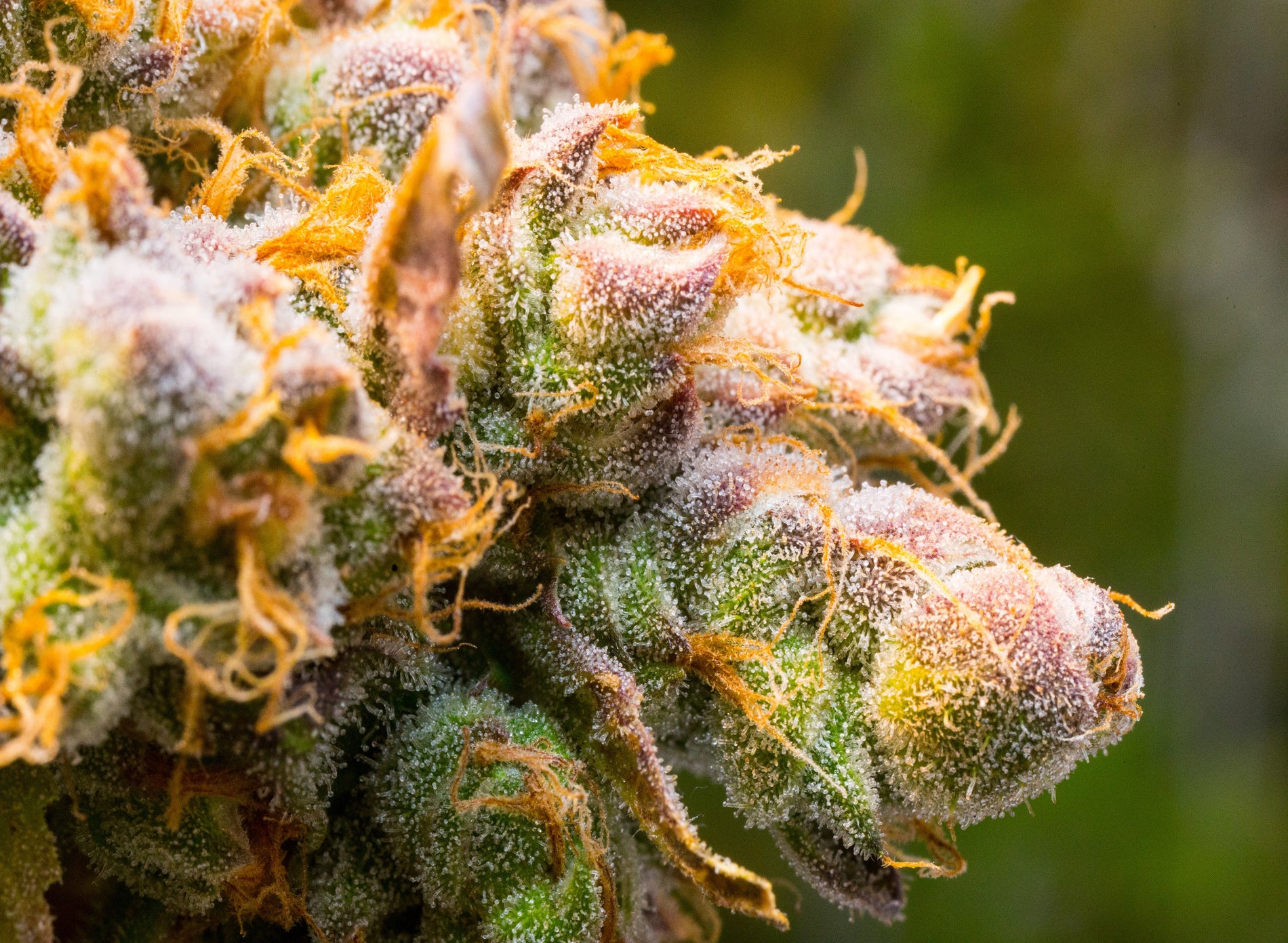Tiny but oh-so-important, Cannabis trichomes are the microscopic, hair-like structures that cover the buds, leaves, and stems of the cannabis plant. These trichomes are responsible for producing the cannabinoids and terpenes that give cannabis its unique effects and flavors. Understanding the different stages of trichome development is crucial for growers and consumers alike, as it can affect the potency, flavor, and effects of the overall cannabis product. In this article, we will cover the ins and outs of trichome development as it relates to the identification and harvesting cannabis.
What We Will Cover:
What are cannabis’ trichomes?
The four stages of trichome development
The three different types of trichomes and their physicality
Why knowing about cannabis trichomes is so important when harvesting your cannabis
Now that we are a little bit more clear about what cannabis trichomes are and what we will cover, let’s dive a little deeper into the different trichome stages and the physical contrasts between each trichome phase and their effects.
Stage 1: Clear Trichomes
The first stage of trichome development is the clear stage. During this stage, the trichomes are small and translucent, and the cannabis plant is still developing. Harvesting at this stage may result in a more cerebral and energizing effect, but the potency and flavor may not be fully developed. Clear trichomes indicate that the plant is not yet ready for harvest, so wait patiently.
Stage 2: Cloudy Trichomes
The second stage of trichome development is the cloudy stage. During this stage, the trichomes become more opaque and milky in appearance. This is the ideal time to harvest for most cannabis strains, as the potency and flavor are at their peak. Milky trichomes indicate that the plant is at its highest concentration levels!
Stage 3: Amber Trichomes
The third stage of trichome development is the amber stage. During this stage, the trichomes become darker and more amber in color. This stage is ideal for those who prefer a more relaxing and sedative effect, as the THC begins to degrade into CBN. However, harvesting at this stage may result in a less potent and flavorful product. Amber trichomes indicate that the plant is overripe and past its peak concentration levels, so if you haven’t harvested yet…. Get to it!
Stage 4: Mixed Trichomes
The fourth stage of trichome development is the mixed stage. During this stage, the trichomes are a mix of clear, cloudy, and amber. This stage is ideal for those who prefer a balanced effect, as the THC and CBD levels are more balanced. However, harvesting at this stage may result in a less potent and flavorful product. Mixed trichomes indicate that the plant is nearing the end of its peak concentration levels. Remember that identifying this stage is best viewed under a microscope considering the plethora of cannabis trichome color on your pre-harvested buds.
It’s as simple and straightforward as that and yet knowing these phases during the marijuana plant’s growth stage makes all the difference when it comes time to harvest your precious product. These are some of the few examples of why identifying the different types of trichomes comes in handy to consumers and growers alike. It is with all these pieces of knowledge that you can make the informed decision on when you harvest your crop and get to smoke your cannabis.
Different Types of Cannabis Trichomes and Their Physicalities:
1. Bulbous trichomes: These are the smallest trichomes found on the plant, measuring about 10-30 micrometers. They are tiny bulbs that appear on the surface of the entire plant but are so small they can’t be seen with the naked eye.
2. Capitate sessile trichomes: These trichomes are slightly larger than bulbous trichomes and contain both a head and a stalk. They measure about 25-100 micrometers and are found on the underside of the sugar leaves and fan leaves, but are usually only visible through a microscope.
3. Capitate stalked trichomes: These are the largest and most abundant trichomes, measuring about 50-500 micrometers. They have a head that sits atop a stalk and are found primarily on the flowers and leaves of the cannabis plant.
Each type of trichome contains different concentrations of cannabinoids, terpenes, and flavonoids, which contribute to the unique effects and flavors of different strains of cannabis. They have a head that sits atop a stalk and are shaped like mushrooms. Capitate stalked trichomes increase in density during the flowering stages of the plant and produce the highest quantity of desirable cannabinoids and terpenes, which are ideal for the production of cannabinoid derivatives.
Trichome Harvest Chart
| Trichome Stage | Coloring | Benefit And Downfall | Harvest Time |
| Clear Trichomes | Translucent | Cerebral and energizing but low potency and flavor | Not Ready to harvest |
| Cloudy Trichomes | Milky And opaque | Peak potency, concentration, and flavor | Perfect time to harvest |
| Amber Trichomes | Darker, amber, honey | Relaxing and sedative effects, but lower THC | Over-ripening, Need to harvest |
| Mixed Trichomes | Clear, cloudy, and amber | Good mix of THC and CBD with balance effects, less flavor and potency | Harvest |
The Breakdown…
Understanding the different stages of trichome development and staying conscious of the trichome chart is crucial for both growers and consumers. Clear trichomes indicate that the plant is not yet ready for harvest, while cloudy trichomes indicate that the plant is at its peak concentration levels. Amber trichomes indicate that the plant is overripe and past its peak concentration levels, while mixed trichomes indicate that the plant is nearing the end of its peak concentration levels. By understanding these stages, growers and consumers can ensure that they are harvesting and consuming cannabis products that are at their peak potency, flavor, and effects. Stay up to date with these marijuana growing tips throughout the cultivation process and you are sure to end your harvest on a high note!



















